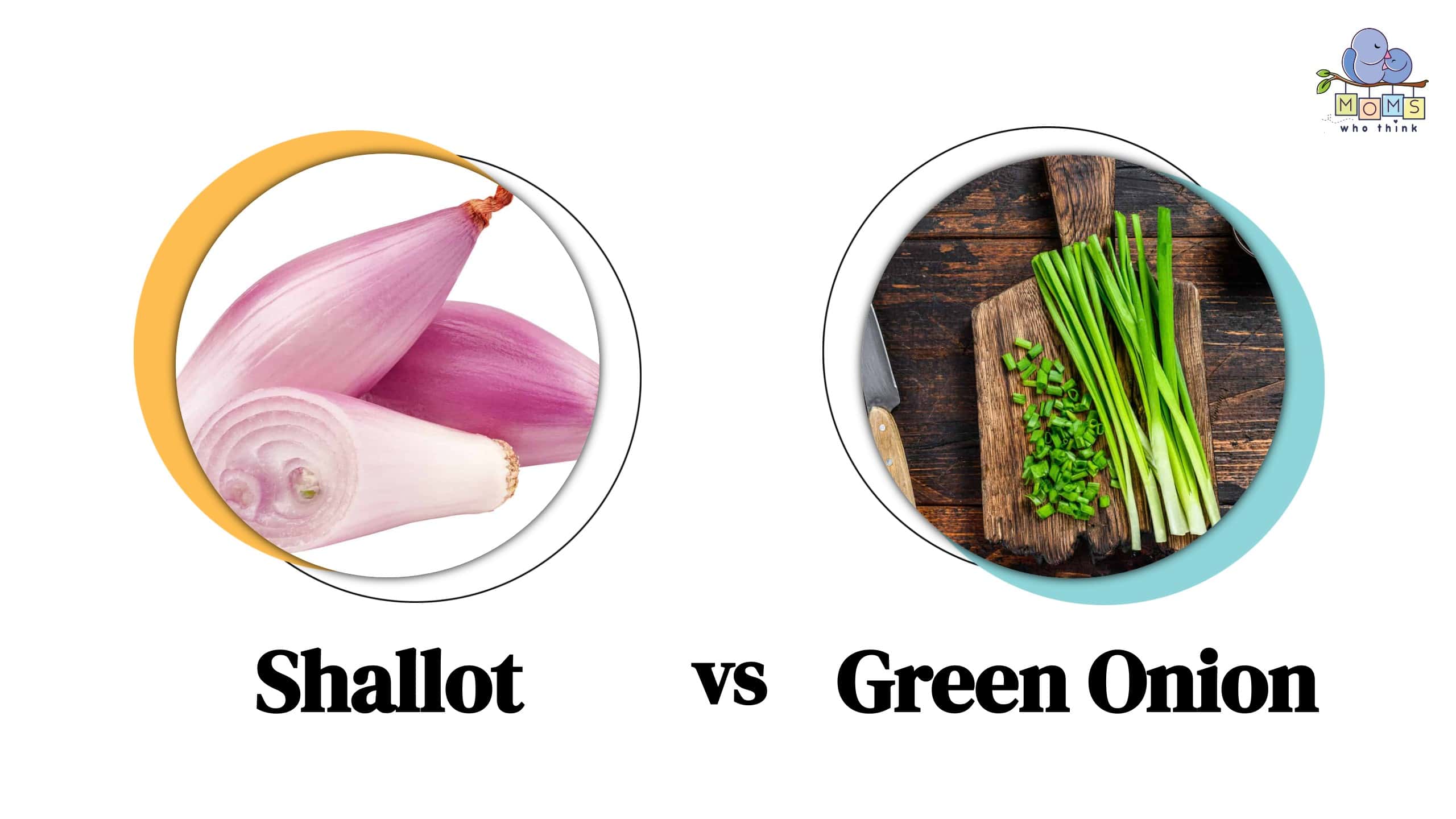Shallots and green onions are both flowering plants in the allium genus. This family of plants also includes leeks, garlic, onions, and chives. While they are all aromatic plants and used in cooking, they each have their purpose in the kitchen. Here, we are going to examine two of these plants: shallots and green onions. Both taste similar to regular onions, but since they are milder, they won't make you cry when chopping them like regular onions. However, they have some key differences that set them apart. When it comes to shallots vs. green onions, they are different in color, shape, size, and taste.
Shallots vs. Green Onion Nutritional Value
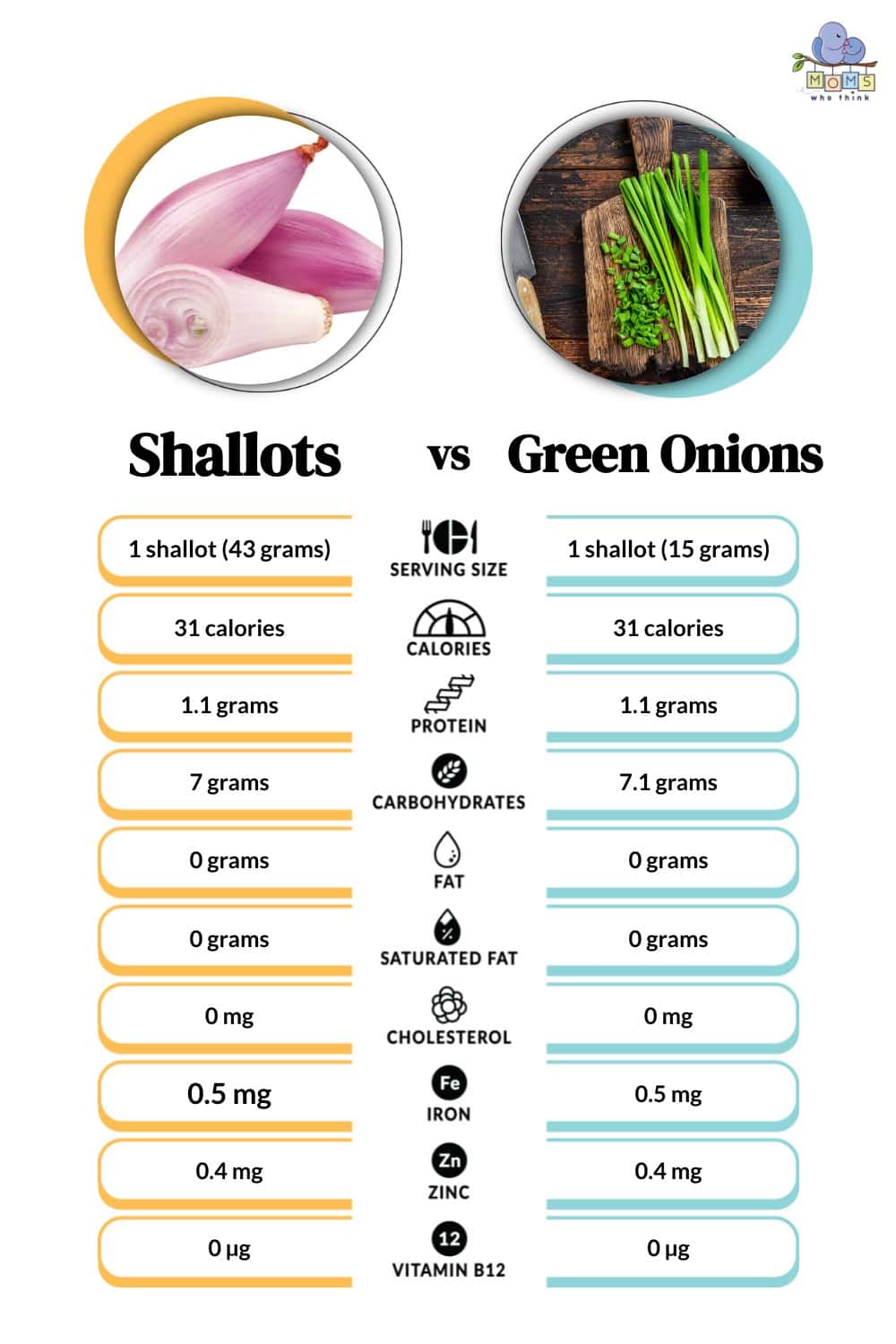
These two fragrant vegetables can be used interchangeably in some dishes, but they are each distinct. They look and taste different from each other, but nutritionally they are similar. They have a similar amount of calories, proteins, and carbs. So, when home cooks are deciding which one to use, it comes down to flavor and texture rather than nutritional value.
Both shallots and green onions offer some nutritional value. According to Healthline, shallots are rich in antioxidants, boost circulation, and improve blood sugar levels. WebMD explains that green onions are a good source of fiber and can help reduce inflammation.
The price and availability is another factor. Shallots aren’t as common as green onions, and many home chefs opt for regular onions to save money. While green onions are widely available and inexpensive.
What Are Shallots?
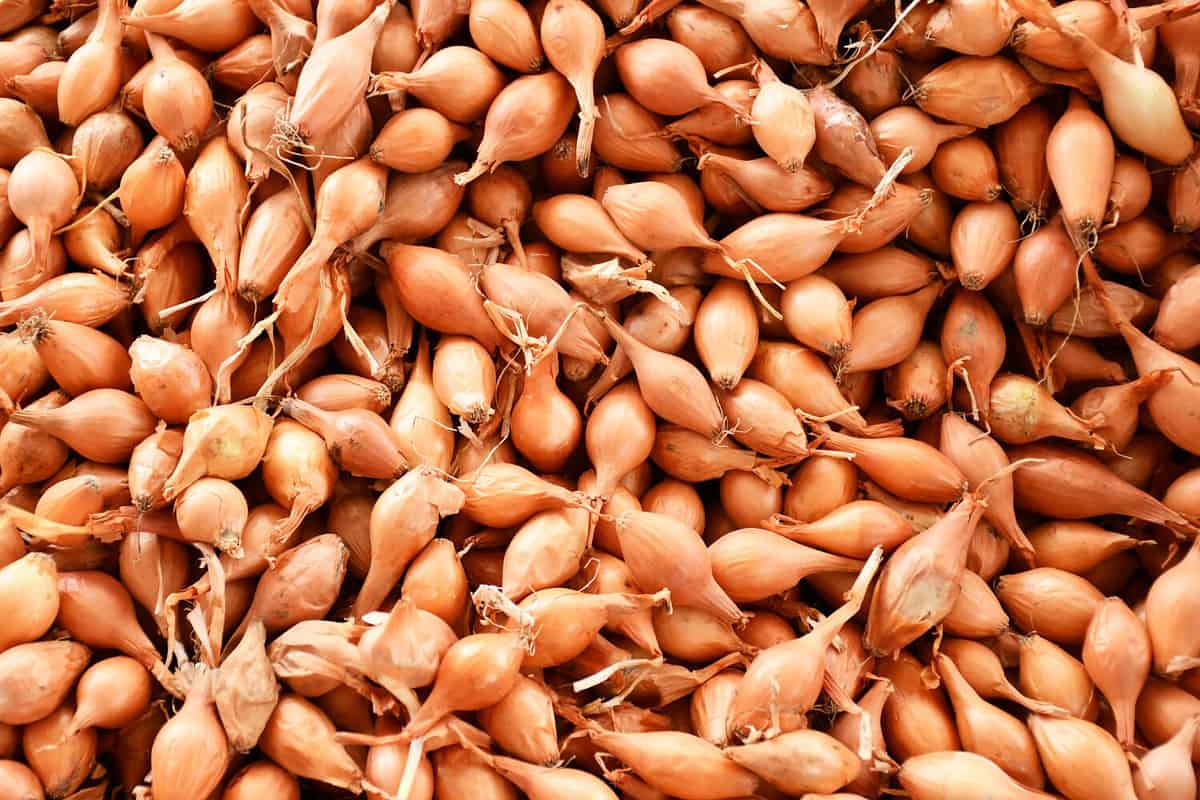
©reyhan meral agar/Shutterstock.com
Shallots are small, grow in clusters, and are covered in papery skin. They are bigger than garlic but smaller than regular onions. When they are harvested, they are aged to dry out their paper skins, similar to onions. Shallots have a strong, sharp flavor with sweet undertones that are more similar to onions than garlic. Similar to garlic, shallots have several bulbs inside their natural paper wrapping.
Shallots are popular in French cooking, and they are key ingredients in several classic French sauces, including bearnaise, bordelaise, vinaigrette, beurre blanc, and marchand de vin. This is probably the reason that shallots have a reputation as being more sophisticated than onions. Shallots are grown throughout Europe, the United States, Southeast Asia, and China. Shallots vary in shape, color, size, and flavor. They are delicate to grow, and the amount of daylight the plants receive influences their taste and size. French shallots are called grey shallots or griselle. But other varieties have yellow, brown, or reddish skin. Echalion shallots are often referred to as banana shallots due to their elongated shape. These are commonly grown in England.
What Are Green Onions?
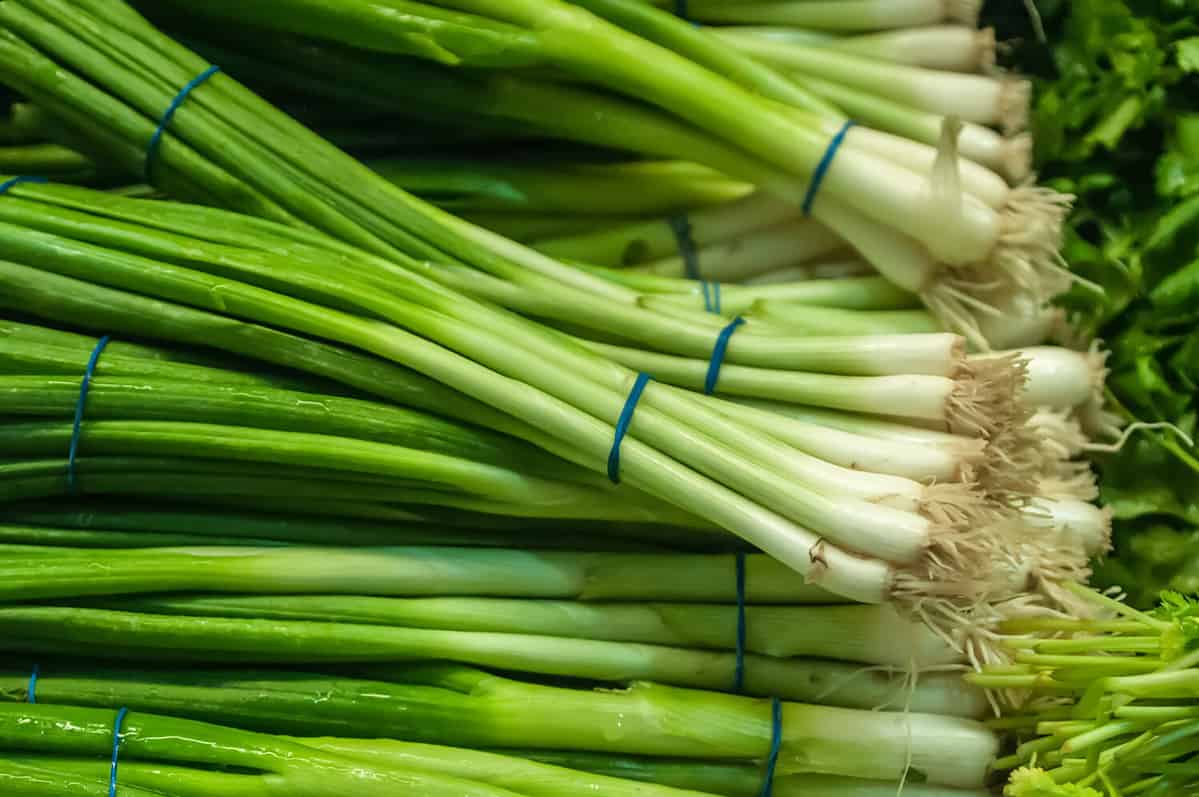
©digidreamgrafix/Shutterstock.com
Green onions are a type of onion that grows with long, green, hollow, strawlike leaves, and they have a small onion bulb. Green onions are sometimes referred to as scallions, but do not get confused. They are just two words for the same thing. It's a regional language difference, but they are, in fact, the same plant. However, they are different than spring onions and chives. Spring onions look similar to green onions but have a larger onion bulb. And chives grow in bunches, and their leaves are like long blades of grass. Chives are rarely sold with tiny bulbs. Most producers just bunch them together and remove the tiny bulb.
Green onions have a sharp flavor that is distinctly oniony. They can be eaten raw or cooked. The flavor is strongest at the part where the white meets the green.
How to Use Shallots
Shallots can be used raw in salads, dips, marinades, and dressings. They can be roasted, grilled, baked, and caramelized too. Caramelizing shallots in butter will give a rich intensity, and a splash of vinegar will round out the taste. Caramelized shallots are excellent for topping burgers and steaks and make a great side dish. For a crunchy salad topping, try frying shallots in oil to make them crispy, and then use similar to fried onions. Pretty much anything an onion can do, a shallot can do too. The possibilities are endless. You can find shallots throughout Southeast Asian cuisine. If you want inspiration on how to use shallots, stir-fries and rice dishes are a great place to start. Pickling and fermenting are good choices, too.
Always store shallots in a mesh bag in a cool, dark place. And avoid cooking with shallots that have started to sprout. Instead, save the sprouted shallots and let them dry out, then plant them in your garden.
Shallot Recipes
Here are three popular recipes with shallots.
- Chicken Saltimbocca with Mushroom Sauce Recipe
- Butternut Squash, Chard, and Spinach Lasagna Recipe
- Shrimp and Feta Scampi Recipe
How to Use Green Onions
Green onions are often used raw as a topping in anything from salads to soups and stews to enchiladas and refried beans. They add a little texture and onion aroma without being overpowering, like yellow onions. While most recipes call for green onions as a topping to add to a dish post-cooking pre-serving, you can also cook green onions. One fun way to cook green onions is to place whole green onions on the grill and char them. The green leaves will char quickly, and the small onion will soften nicely. This is a great side dish for a barbecue. Chopped green onions are fantastic in fillings for stuffed mushrooms and peppers. Mix chopped green onions into egg dishes like quiche, frittata, and scrambled eggs for a fragrant meal. Add green onions to fried rice and potato dishes, too. Their mild flavor makes them perfect when you want a hint of onion but don't want the intensity that white and yellow onions add.
Green Onion Recipes
Try making these tasty recipes with green onions.
Growing Shallots in a Home Garden
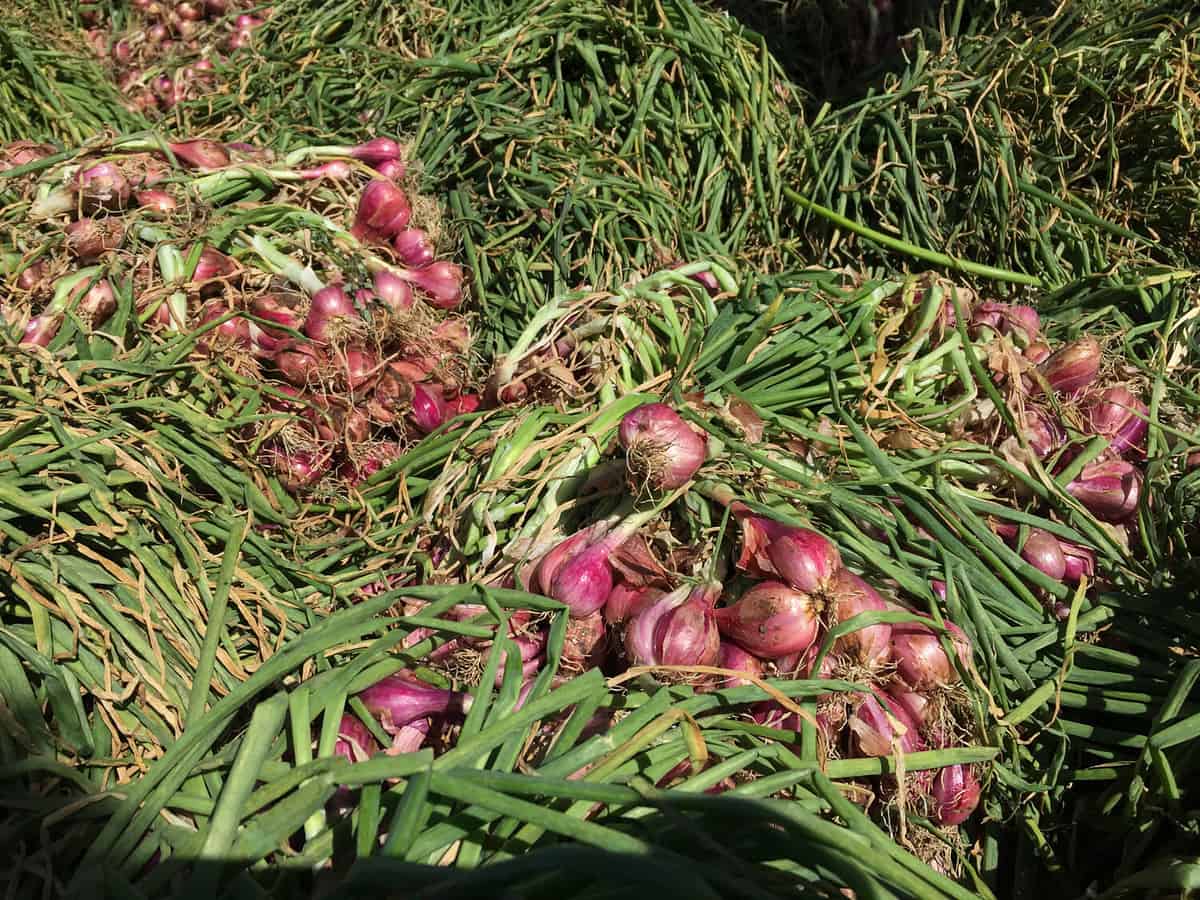
©Arief Stock Photos/Shutterstock.com
In general, onions are one of the easier plants to grow. But shallots are a little more fussy and require some extra special care. You can plant shallots from seed or bulb. One bulb will produce five to ten shallots. Plant them in the Fall for an early Summer harvest. Shallots prefer well-drained soil and lots of sun. They grow best when given a little space; you can even grow them in containers. Shallots do best in slightly acidic to neutral soil and should be planted about six inches apart. When the green leaves on the shallots plants start to turn brownish, they are ready to harvest. This usually occurs around 110 to 120 days after planting them. To dry and cure them, leave them in a shady spot for three to four weeks.
Growing Green Onions in a Home Garden
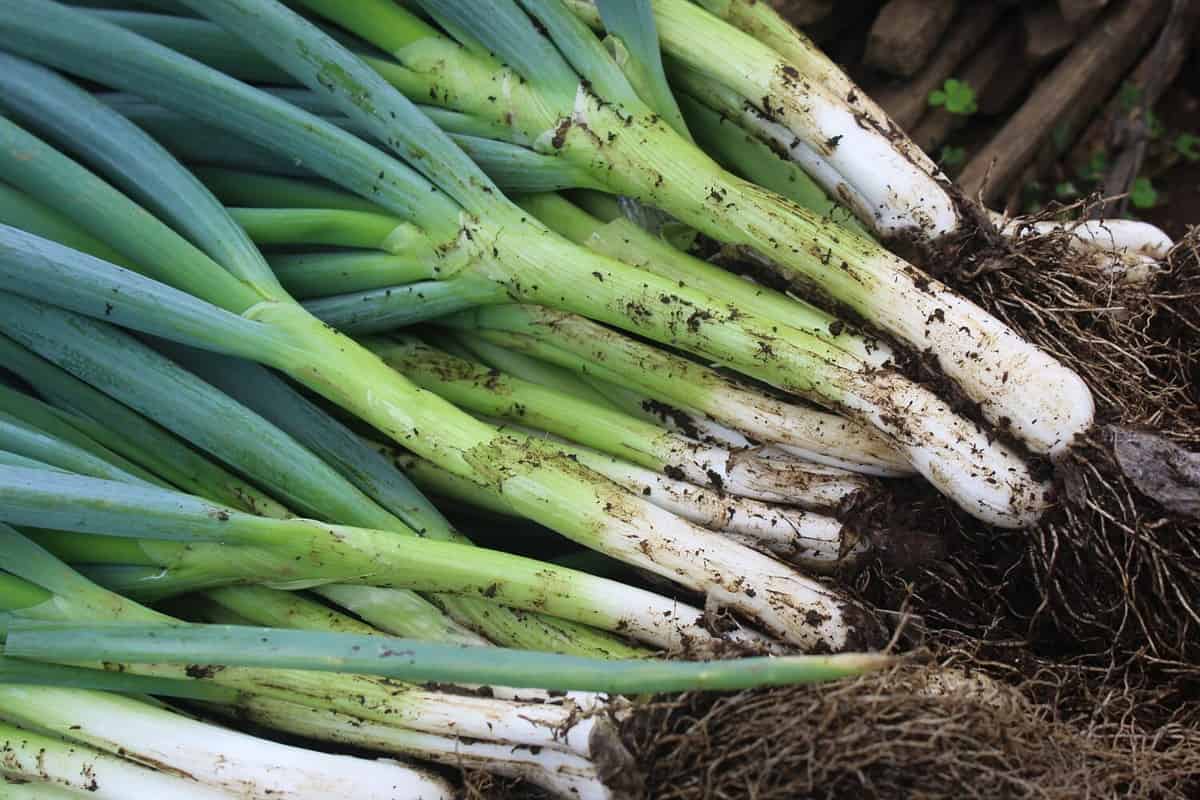
©Dian Zuraida/Shutterstock.com
Green onions are easy to grow, and there are two ways to grow them: from seed or cuttings. Growing them from seed to harvest takes about seventy to eighty days. It is best to start the seeds indoors in the early Spring and then transfer them outside. Choose a sunny spot in the garden or grow them in containers in full sun. Green onions grow best in well-drained, slightly acidic soil. If you want them to be perennial, avoid harvesting them the first year so they can become more established.
You can also grow green onions from the onions you buy at the store. Cut them near the white part and place them in a cup of water so the roots are wet, then set in a sunny window. The shoots that regrow are ready to use when they are a couple of inches tall. After a week or two, you must transfer them to a small pot with soil. Because they grow so fast, they are a great vegetable to grow for beginners and children learning about the growth cycle. However, if you have pets, keep green onion plants where they can not get them because the plant is toxic to pets.
In Short
Shallots and green onions may come from the same family and have a similar mild onion flavor. However, when it comes to shallots vs. green onions, availability, price, and personal preference will determine which to use.
